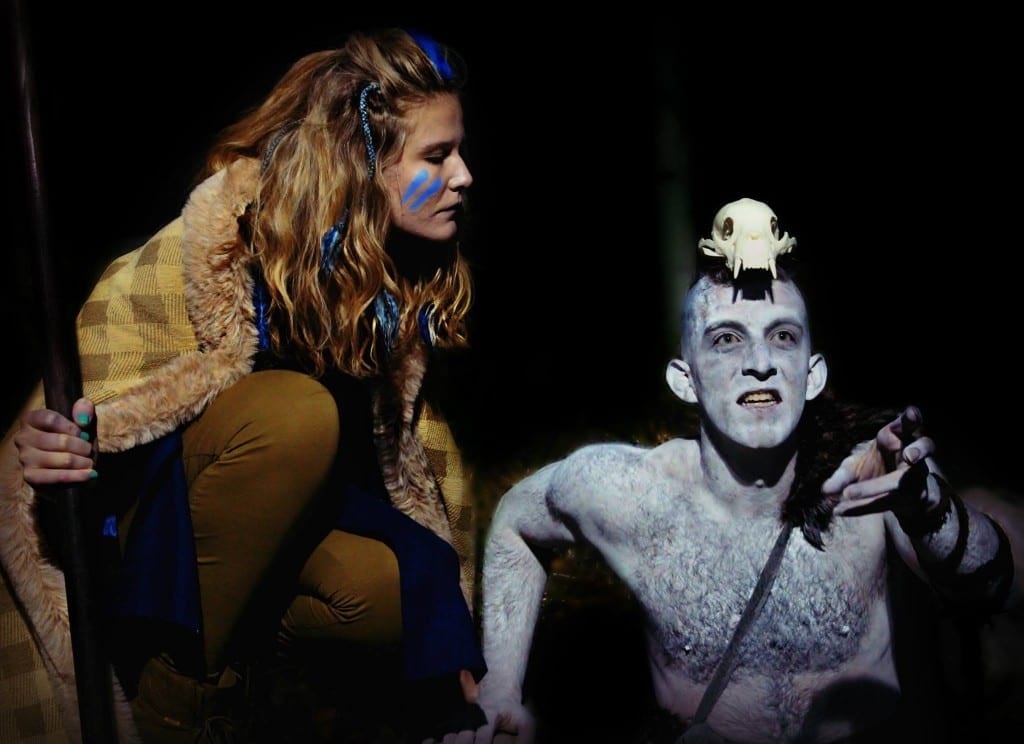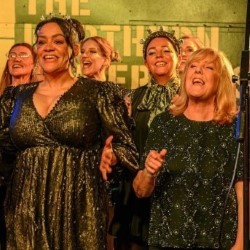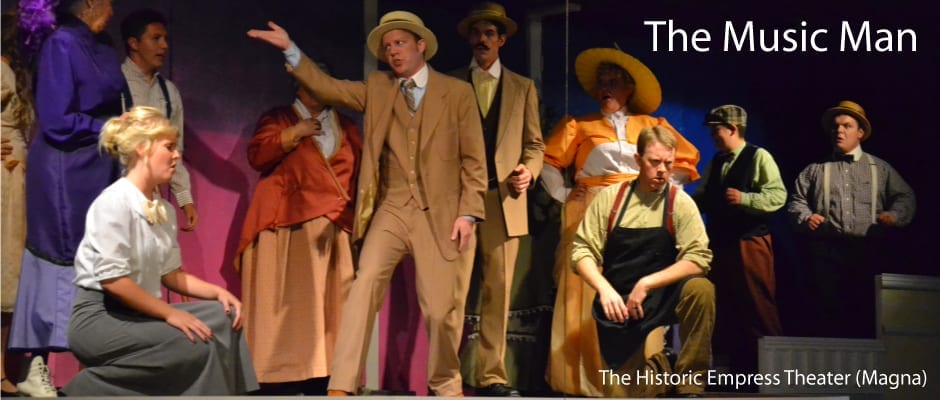SALT LAKE CITY — In Shakespeare’s original text of The Tempest, King Alonso and company have traveled across the sea from Naples to Carthage for the wedding of princess Claribel. On their way back home, they find themselves shipwrecked on an enchanted isle somewhere in the Mediterranean. In director Melanie Nelson’s creative reimagining of the show at Westminster College, Carthage becomes Briton, and the enchanted island now lies somewhere off the eastern cost of Scotland. This choice shows through in the Pictish flavor of the island’s magical inhabitants Caliban and Ariel, as well as the banished duke Prospero and his daughter Miranda—who have, it seems, gone native.
Nelson also made the choice to change the gender of many on-stage characters . Typically, just over 10% of Shakespeare’s characters are female. In this production, there are only 2 men in the cast of 15. As a result, Prospero becomes Prospera, Alonso becomes Alonsa, and so on. The monster Caliban, and prince Ferdinand retain their genders—as does the ingenue Miranda. All other characters are changed to the opposite gender. This choice mostly worked for me, and was an interesting re-interpretation of the characters. I did, however, miss the impact of Miranda’s line near the end of the play, when as the only woman on the island and having never seen any men besides Caliban, Prospero, and Ferdinand, she finds herself in the midst of a whole crew of men and exclaims:
“O, wonder!
How many goodly creatures are there here!
How beauteous mankind is! O brave new world,
That has such people in’t!”
 I also had difficulty with Allison Smith‘s portrayal of Prospera. Smith spoke the part eloquently and with precision, but did not display the maternal gravitas of a wise parental figure. However, I commend Smith on her lovely speaking voice, which is a delight to listen to. In general, the actors’ diction and handling of the language was very strong in this show. I heard every word, and I knew that the actors had a solid grasp on the meaning of every line.
I also had difficulty with Allison Smith‘s portrayal of Prospera. Smith spoke the part eloquently and with precision, but did not display the maternal gravitas of a wise parental figure. However, I commend Smith on her lovely speaking voice, which is a delight to listen to. In general, the actors’ diction and handling of the language was very strong in this show. I heard every word, and I knew that the actors had a solid grasp on the meaning of every line.
For me, Michael Calacino (as Caliban) and Merry Magee (as Gonzala) delivered the stand-out performances of the evening. Calacino’s movement and characterization were technically masterful; but more than that—he created a Caliban that I cared about. A monster that moved me. Magee’s portrayal of Gonzala was so organic and connected—my eyes went to her every time she went on stage. Even in moments where she was not speaking, her active listening and connection with the other characters on stage was palpable.
 One complaint regarding the performances rests on the clowns Stephana (played by Amanda Hayter) and Trincula (played by Carlie Young). This drunkard and his fool typically provide strong comic relief in the midst of loss and apprehension. These two actresses were charming and fun. Unfortunately, they weren’t terribly funny.
One complaint regarding the performances rests on the clowns Stephana (played by Amanda Hayter) and Trincula (played by Carlie Young). This drunkard and his fool typically provide strong comic relief in the midst of loss and apprehension. These two actresses were charming and fun. Unfortunately, they weren’t terribly funny.
The ensemble of actors was extremely focused, and understood well their parts in the bigger picture. This contributed to a strong unity of action, as Nelson’s staging compositions created stunning images and well-defined relations in every scene. The production incorporated some very lovely live percussion and movement from a crew of five island spirits. These spirits spent much of the show dangling from suspended ropes and lent the show an air of mischief and magic.
 All production elements in the show are of professional caliber. Erin West’s costume’s clearly communicate the clashing worlds of 6th century Byzantine excess with the savage Pictish islanders. Hair and makeup from artists Rachel Kimber, Mira Spurgeon, and Briony Denker included both subtle touches of Pict blue, as well as a bold use of bones as ornamentation. Nina Vought’s atmospheric set is both spare, suggestive, and dynamic in a way that perfectly serves this story’s setting. From the moment I entered the theatre I was intrigued and drawn into the lonesome magic of the stony island onstage. Lights and sound from Spencer Brown are rich, textured, and vibrant. Brown’s lighting scheme complemented and accentuated the scenic elements well—especially his use of blues.
All production elements in the show are of professional caliber. Erin West’s costume’s clearly communicate the clashing worlds of 6th century Byzantine excess with the savage Pictish islanders. Hair and makeup from artists Rachel Kimber, Mira Spurgeon, and Briony Denker included both subtle touches of Pict blue, as well as a bold use of bones as ornamentation. Nina Vought’s atmospheric set is both spare, suggestive, and dynamic in a way that perfectly serves this story’s setting. From the moment I entered the theatre I was intrigued and drawn into the lonesome magic of the stony island onstage. Lights and sound from Spencer Brown are rich, textured, and vibrant. Brown’s lighting scheme complemented and accentuated the scenic elements well—especially his use of blues.
Stylistically, and in terms of quality, this production was on par with much of the work I have seen from the Utah Shakespeare Festival. I recommend that readers who enjoy the work down at USF will likely enjoy this colorful and creative re-imagining of The Tempest at Westminster.






